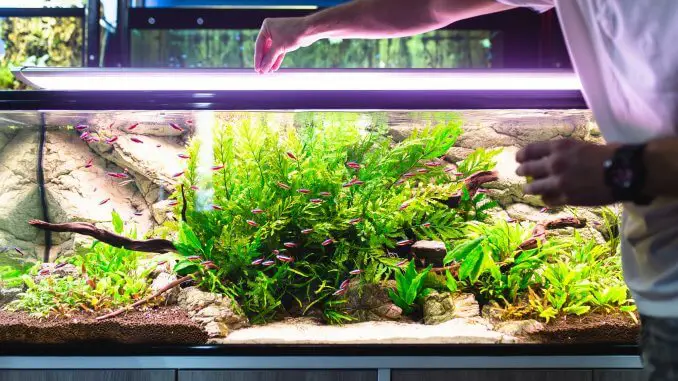
Bloodworms can refer to a few different types of worm including the two most popular ones; the small red larvae from midge flies (Chironomidae) and the genus Glycera a group of worms that are usually found in marine waters.
Both of these worms are suitable for feeding fish.
Most of the worms that you find for sale are the small red larvae variety, and are not actually worms.
You can buy bloodworms either live, frozen or freeze dried. We’re going to take a look at the benefits for each of these, which species of fish will eat them, and how to feed them along with some recommendations of which ones are best for your fish.
TABLE OF CONTENTS
All About Bloodworms
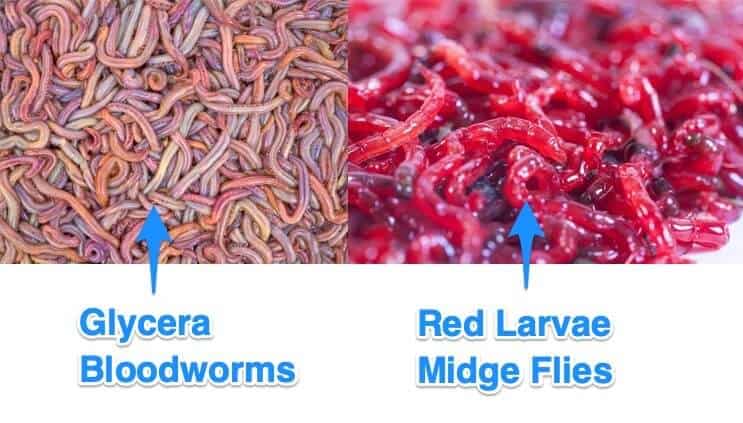
Bloodworms, the larvae of the non-biting midge fly, are bright red in color. They have this color due to the red iron-porphyrin protein in their blood and tissue. They can thrive in polluted water with low oxygen levels because of their hemoglobin content.
This creature is one of the primary foods in the aquatic food chain. Almost every species of meat eating fish will consume this worm. It is also used to feed other aquatic animals such as salamanders, turtles, crabs, frogs, shrimp and snails.
Worms from the genus Glycera are a group of bristle worms that are usually found living on the seabed of marine waters. They can grow up to 14 inches and are a creamy pink color. They also have a venomous bite.
Types of Bloodworms
Freeze Dried Bloodworms
Omega One Freeze Dried Bloodworms
If you’re looking for a small tub, this 0.46oz container of freeze dried blood worms is ideal. Omega One offers one of the best quality options around.
Freeze dried ones usually come in small plastic tubs.
You will find that some freeze dried come in Grade A and Grade B. Although Grade A is slightly more expensive, it’s worth paying the extra because Grade B are lower quality and can contain non bloodworm particles.
Despite them being the least nutritional, they are the most convenient way to feed your fish.
To feed this food to your fish, soak it for a couple of minutes in water before adding it to the tank. This will soften it.
Freeze dried varieties usually float at the top of the tank, so if you want to feed them to bottom dwellers, soak them for around 10 minutes before adding them to the tank.
San Francisco Bay Freeze Dried Bloodworms
If you’re looking for a larger container of freeze dried bloodworms, then this 1.75oz tub is great. It has over 50% crude protein, and makes a great treat for your fish.
Live Bloodworms
Live bloodworms aren’t always as easy to find as frozen ones.
They also don’t keep as long as the frozen or freeze dried varieties. The larvae life cycle is short, usually just 10-12 days, and they should be used within 2 or 3 days of buying them.
Live worms usually come in a plastic container. You should rinse the worms before feeding them to the fish and don’t add any of the water in which they were stored to your tank.
You should store them in the fridge, with enough water to cover the bottom of the container.
They are ideal for large tanks which have many fish.
Whilst live foods are usually more nutritious than frozen foods, they do have a higher risk of carrying infection and disease. For this reason, it’s not recommended to collect your own worms or larvae from the wild.
One way to avoid contaminating your tank is to buy your live foods from a reputable breeder.
Live ones are ideal for conditioning fish if you want them to breed; they are commonly used to condition Betta fish.
Feeding them live foods will also bring out the hunting instincts of your fish and you will see more of their natural behaviors.
Frozen Bloodworms
Frozen ones are more convenient than feeding live foods as they keep for much longer (up to 6 months) in the freezer.
They come in a few different forms, from frozen blocks to thin sheets.
One of the benefits of using frozen worms is that it’s unlikely they will be carrying any parasites or disease.
To only downside of feeding them frozen worms is you will miss out on watching your fishes’ natural hunting behaviors.
When you are ready to feed your fish, fill a small container with some of the tank water and place a cube of bloodworms in, to thaw it out. Once it has thawed, strain the defrosted food to remove the water and excess juices.
Whilst many people add it all to the aquarium, it can be an unnecessary bio-load on the filter as the fish won’t eat the juices.
If you only have a small tank, you’ll want to cut the cube in half to ensure you don’t overfeed the fish. You can judge this by watching them when you add the first few cubes. Time them for a couple of minutes and if there are any leftover worms after this, you’ve overfed them.
Use the first few times to determine how much you should be feeding your fish. It’s better to add less at first and increase the amount you’re feeding them over time.
When you add them to the tank, you can either do a mass feeding and add the whole lot over the length of the tank, or you can feed fish directly. To do this you can use either pipette or tongs.
Which Fish Can You Feed Bloodworms To?
All freshwater and saltwater fish that are either carnivorous, or omnivorous.
Bloodworms are known as the ultimate bait fish, because 99% of fish will eat them.
They can provide your fish with lots of protein, but it is important not to over feed them. They should not be used as a complete diet, rather as a supplement to their regular diet which is usually flake or pellet food.
Even though they are rich in iron and protein, they lack other essential amino acids, minerals, and vitamins which your fish need to breed, so always feed them alongside their staple diet.
Bloodworms are also used to condition fish that are about to breed.
They are usually high in protein so are better suited to fish such as Bettas, and any livebearer such as Mollies and Guppies. This is a popular food for Discus, Eels, and Loaches too.
Breeding Your Own Bloodworms
You might think breeding bloodworms would be cheaper and more convenient than buying live ones.
Breeding your own means you known the conditions they have been bred in and you can minimize the risks of parasites and disease. However, breeding them is difficult and not practical for most hobbyists.
Unlike breeding fish, bloodworms can be tricky to breed because you need to have somewhere that they can fully mature into flies – the flies are prone to flying away to lay their eggs elsewhere.
There are four main stages of their life cycle; egg, larva, pupa, and the adult midge. The main difficulty lies in the inability to be able to induce swarming and mating of midges in captivity.
Most hobbyists who breed their own use either tubifex worms or blackworms.
Those looking for a challenge can give it a go, but it won’t save you much money, especially if you do not already own everything you need.
Raising bloodworms from eggs is the easy bit. Get some chironomid eggs and keep them in a container with some soil and manure. Add some water and store in a cool, dark place.
Add a little manure each week and the eggs will eventually hatch into bloodworms. You can catch these with a net to feed your fish.
Breeding more bloodworms is the difficult bit. You will need somewhere as big as a greenhouse to allow some bloodworms to develop into adult midges and swarm to produce new eggs.
This makes the process unfeasible to most, it’s generally more effort than it’s worth.
If you own a pond, you may be able to encourage midges to spawn around it. This would mean that you wouldn’t need a greenhouse, you could just collect eggs deposited around your pond.
You may unintentionally encourage mosquito spawning, but this is not necessarily a bad thing as most fish that like bloodworms will also enjoy eating mosquito larvae. Just be aware that mosquitos will bite, whereas midges do not.
Omega One Freeze Dried Bloodworms
If you’re looking for a small tub, this 0.46oz container of freeze dried blood worms is ideal. Omega One offers one of the best quality options around.
Frequently Asked Questions about Bloodworms
Do Bloodworms Bite?
Most species in the Glycera genus will bite. The Gylcera fallax was studied by a group of scientists and found to have a bite that causes a similar allergic reaction to bee strings.
Are Bloodworms Dangerous To Humans?
The only real danger from bloodworms is being bitten, so you might want to wear gloves if you’re handling live ones.
How Often Should You Feed Your Fish Bloodworms?
You can feed your fish live worms once or twice a week. Remember though, you should always feed your fish a varied diet. Overfeeding your fish with bloodworms can lead to constipation.
Summary
If you are reading this, the likelihood is you’re trying to figure out whether you can feed your fish bloodworms. Providing they are either omnivores or carnivores, the answer is yes!
Just be careful that you don’t overfeed them, and that you provide them with a varied diet.
Go ahead and try introducing this delicacy to your fish – they will definitely thank you for this tasty treat.
What fish do you have, and do they enjoy bloodworms? Let us know in the comments below…

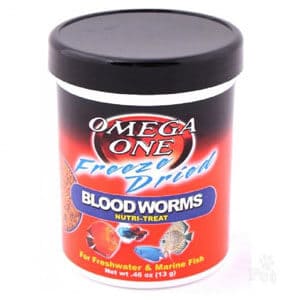
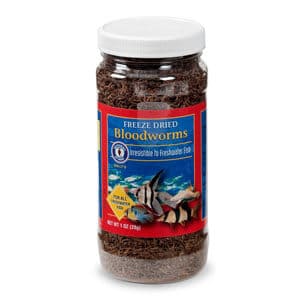
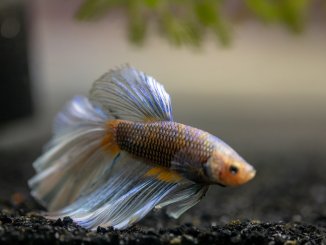
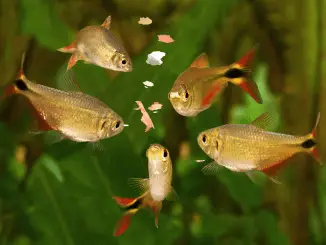
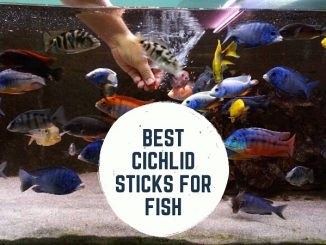
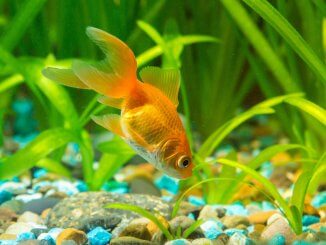
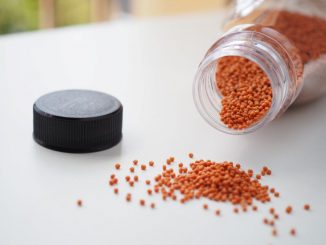
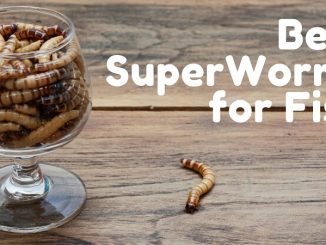
Thanks for your weekly advice it’s been really helpful it answers a lot of questions and give me lots of ideas thanks . The question I have is Is it safe to feed my African cichlids live Redwigglers once/ twice a week after being cleaned in water from aquarium again thanks
Which african cichlids do you have? Thanks, Robert
Where can I get live blood warm I go salt water fishing
I’ve tried feeding my fish bloodworms but they always sink almost instantly, whether I defrost a small amount or put half a frozen block in (as recommended by my local fish store). Does anyone have any recommendations on how to get them to float long enough so my fish can eat them?
Hi Nom, try using a worm feeder. Its a cone shaped feeder which you fill and attach to the top of your aquarium, and you fish can swim up and pull them out without them sinking to the bottom. Thanks, Robert
Great – thank you!
I have the same problem. The bloodworms sink very fast and some fish don’t seem to know if they have been fed and end up looking to be fed. Have you found any thing that we can do?
My different types of Tetras love the frozen Blood worms I give them twice a week!
I have Datnoids.. The three larger ones (4inches) eat pellets and frozen bloodworms, The other 4 (3 inches)will only eat the bloodworms. I have a 135 gal tank. Should I starve the smaller ones and only feed the pellets with occasional worms or just feed the big ones pellets and hope the little ones start eating them. The shrim pellets Are small enough for them all but the small Dats ignore them.
I have been having a midge infestation problem in my turtle tank recently and decided to cover the tank, with midge inside hoping I’d starve them. After a month, the population seemed to only increase, so I opened up the netting to free the midges. Cleaned out the tank but not before picking out some thick juicy blood worms. I then covered the tank again and for the next few days noticed only one or two midges trapped inside. After another 2 weeks, the population increased again. My point is, midges are apparently not difficult to breed in an apartment because adult flies don’t appear to require food and they seem willing to just hang around the tank. Just be sure you check regularly to catch the larger midges before you get a population boom (I read that each midge egg sac can have as many as 1000 eggs, so no need for swarming. Also watch out for mosquito breeding.
You need to add a section on the possibility of developing bloodworm allergies, which is a real risk in this hobby! Nine years ago I developed this allergy which currently manifests as itching and shortness of breath. The cheap and dusty freeze dried worms from walmart make it worse.
I have kribs, tetras, rasboras, a red tail shark, a Betta and a flower horn cichlid that all enjoy frozen and live blood worms
I have Mirror Carp in my aquarium, and they absolutely love bloodworm. I defrost a whole frozen block and add that to the tank, and they hoover the whole lot up in 2mins flat. Great as a supplement to their daily food.